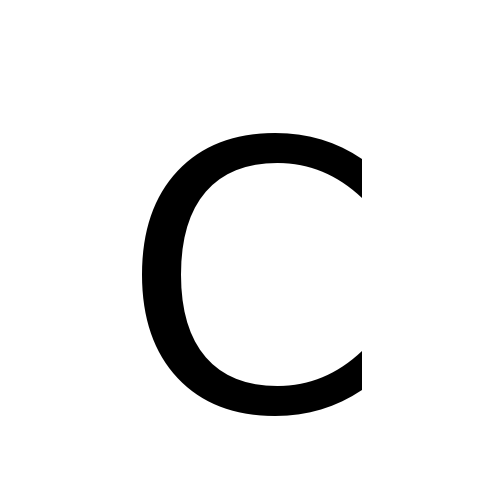Table Of Content

The latest C standard (C11) allows multi-national Unicode characters to be embedded portably within C source text by using \uXXXX or \UXXXXXXXX encoding (where the X denotes a hexadecimal character), although this feature is not yet widely implemented. A structure can also be assigned as a unit to another structure of the same type. Structures (and pointers to structures) may also be used as function parameter and return types. Members of structures and unions cannot have an incomplete or function type.
Jump statements
Unnamed fields consisting of just a colon followed by a number of bits are also allowed; these indicate padding. Future statements can then use the specifier s_type (instead of the expanded struct ... specifier) to refer to the structure. C's string-literal syntax has been very influential, and has made its way into many other languages, such as C++, Objective-C, Perl, Python, PHP, Java, JavaScript, C#, and Ruby.

Rising C++ closes in on C language

Implementations may reserve other keywords, such as asm, although implementations typically provide non-standard keywords that begin with one or two underscores. A function may return a value to caller (usually another C function, or the hosting environment for the function main). The printf function mentioned above returns how many characters were printed, but this value is often ignored. Reading the subscripts from left to right, array2d is an array of length ROWS, each element of which is an array of COLUMNS integers.
Pointers
Thus members cannot be an instance of the structure or union being declared (because it is incomplete at that point) but can be pointers to the type being declared. Strings, both constant and variable, can be manipulated without using the standard library. However, the library contains many useful functions for working with null-terminated strings.
Such a type may not be instantiated (its size is not known), nor may its members be accessed (they, too, are unknown); however, the derived pointer type may be used (but not dereferenced). Objects with automatic storage are local to the block in which they were declared and are discarded when the block is exited. Additionally, objects declared with the register storage class may be given higher priority by the compiler for access to registers; although the compiler may choose not to actually store any of them in a register. Objects with this storage class may not be used with the address-of (&) unary operator. In this way, the same object can be accessed by a function across multiple calls.
Data types
The most important requirement to succeed with pointers and avoid segmentation faults is that they always have a large enough place inside memory that they can actually access. Again, on a system without MMU, any location in the memory is technically such a place, but it’s a lot stricter with memory protection, and we also need to avoid pointers that don’t point to anywhere specific. So if you’ve always been a little fuzzy on pointers, read on for some real-world scenarios of where and how pointers are used. The first part starts with regular pointers, their basics and common pitfalls, and some general and microcontroller specific examples.
Nowadays, almost all new languages adopt or build upon C-style string syntax. Again, reading from left to right, this accesses the 5th row, and the 4th element in that row. The expression array2d[4] is an array, which we are then subscripting with [3] to access the fourth integer.
Operator precedence
The type qualifier volatile indicates to an optimizing compiler that it may not remove apparently redundant reads or writes, as the value may change even if it was not modified by any expression or statement, or multiple writes may be necessary, such as for memory-mapped I/O. In some cases, we are only interested in the memory address itself, and we might just want to pass that address around, for example to a function that doesn’t care how the data itself is arranged. If we use the void pointer, we can simply assign to and from it without any explicit type cast necessary, which can help us keep the code a bit cleaner.
R, S and T stand for any type(s), and K for a class type or enumerated type. The influence of The C Programming Language on programmers, a generation of whom first worked with C in universities and industry, has led many to accept the authors' programming style and conventions as recommended practice, if not normative practice. For example, the coding and formatting style of the programs presented in both editions of the book is often referred to as "K&R style" or the "One True Brace Style" and became the coding style used by convention in the source code for the Unix and Linux kernels. Historically, embedded C programming requires nonstandard extensions to the C language in order to support exotic features such as fixed-point arithmetic, multiple distinct memory banks, and basic I/O operations. In addition, the C99 standard requires support for identifiers using Unicode in the form of escaped characters (e.g. \u0040 or \U0001f431) and suggests support for raw Unicode names. While C does not include certain features found in other languages (such as object orientation and garbage collection), these can be implemented or emulated, often through the use of external libraries (e.g., the GLib Object System or the Boehm garbage collector).
Unlike structures, the components of a union all refer to the same location in memory. In this way, a union can be used at various times to hold different types of objects, without the need to create a separate object for each new type. The application programming interface (API) of the C standard library is declared in a number of header files. Each header file contains one or more function declarations, data type definitions, and macros. Structures and unions in C are defined as data containers consisting of a sequence of named members of various types.
The most common statement is an expression statement, consisting of an expression to be evaluated, followed by a semicolon; as a side effect of the evaluation, functions may be called and variables may be assigned new values. To modify the normal sequential execution of statements, C provides several control-flow statements identified by reserved keywords. The for statement has separate initialization, testing, and reinitialization expressions, any or all of which can be omitted.
These functions are detailed in various standards such as POSIX and the Single UNIX Specification. The basic C execution character set contains the same characters, along with representations for alert, backspace, and carriage return. Run-time support for extended character sets has increased with each revision of the C standard. In early versions of C, only functions that return types other than int must be declared if used before the function definition; functions used without prior declaration were presumed to return type int. Some implementations are not hosted, usually because they are not intended to be used with an operating system. A free-standing implementation is free to specify how it handles program startup; in particular it need not require a program to define a main function.
Unless otherwise specified, static objects contain zero or null pointer values upon program startup. If the program attempts to access an uninitialized value, the results are undefined. Many modern compilers try to detect and warn about this problem, but both false positives and false negatives can occur. C does not have a special provision for declaring multi-dimensional arrays, but rather relies on recursion within the type system to declare arrays of arrays, which effectively accomplishes the same thing. The index values of the resulting "multi-dimensional array" can be thought of as increasing in row-major order. Multi-dimensional arrays are commonly used in numerical algorithms (mainly from applied linear algebra) to store matrices.
Vintage Douglas C-54 plane with 2 people on board crashes into Alaska riverbank - FOX 10 News Phoenix
Vintage Douglas C-54 plane with 2 people on board crashes into Alaska riverbank.
Posted: Tue, 23 Apr 2024 21:05:27 GMT [source]
The enumerated type in C, specified with the enum keyword, and often just called an "enum" (usually pronounced /ˈiːnʌm/ EE-num or /ˈiːnuːm/ EE-noom), is a type designed to represent values across a series of named constants. Each enum type itself is compatible with char or a signed or unsigned integer type, but each implementation defines its own rules for choosing a type. The syntax of the C programming language is the set of rules governing writing of software in C. It is designed to allow for programs that are extremely terse, have a close relationship with the resulting object code, and yet provide relatively high-level data abstraction. C was the first widely successful high-level language for portable operating-system development.

No comments:
Post a Comment